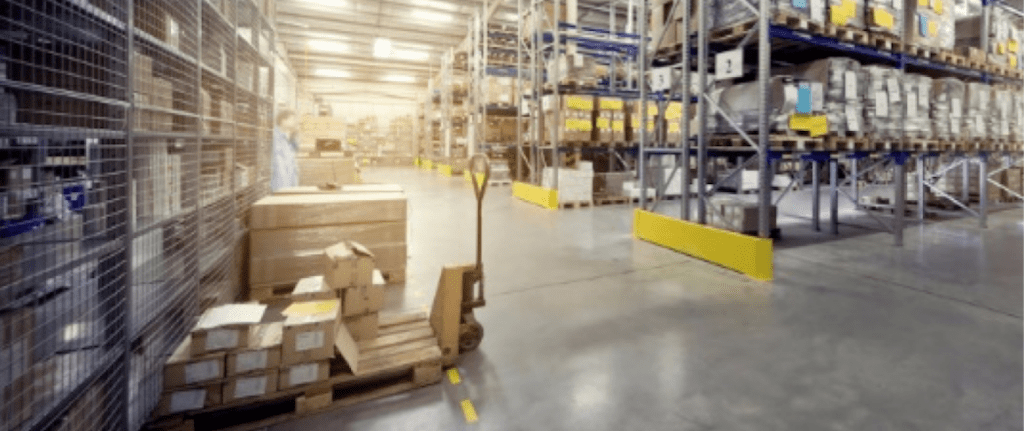Maintain storage conditions: Maintaining proper temperature and humidity can be beneficial to the goods within the warehouse. To avoid unnecessary costs, it is also important to cover and secure storage areas as uncovered areas can permit weather damage.
Reduce labor: Labor is a significant contributor to cost in warehouse management. By integrating automation within the warehouse, labor costs can be drastically decreased and long term profits can be realized.
Optimize space: Land cost is one of the largest contributors to costs in warehousing. Cost per pallet stored should be questioned to ensure space is optimized. The type of racking within your warehouse should utilize the height of your warehouse. Aisle space is also a consumer of space and having the right equipment to optimize this space can contribute to cost savings for the future.
Error reduction: focus on reducing errors within the warehouse. Improving the overall quality of operations will aid in the reduction of expenses. Collect data on error rates and set targets to reduce them. Highlighting where the faults are and acknowledging good performance to ensure a focus on quality within the warehouse.
Receiving practices and cross-docking: Cross-docking is an effective practice to reduce handling and costs while improving customer service and shipping costs. Click here to find out more about cross-docking.
Assess new technology: investigate new lower-energy systems and replace older equipment which costs more to run.
Re-assess suppliers: re-examine your suppliers and have them submit new bids on products and services you frequently purchase. Compare quotes from other suppliers and determine where spending can be curbed.
Continuous improvement program: reducing wasted motion, wasted time, wasted inventory and more can be controlled through a continuous improvement program. The program should include visual communication of information, process mapping, process control, and identification and elimination of defects. By implementing such a program within the warehouse efficiencies can be improved and costs can be minimized
Save energy: Timers and sensors so that lights turn off when no one is around an area of the warehouse is not only energy efficient but will save you money on your electricity bill. Alternatively, replace existing light bulbs with energy-efficient bulbs. Also, painting walls white and installing windows to introduce natural light improves light levels while reducing energy expenditure.
Employee suggestions: Employee suggestions can play a key role in reducing costs and improving productivity within the warehouse. Employees have hands-on experience regarding daily operations and can come up with easy-to-implement cost saving ideas. This also ensures employee commitment to implement cost saving strategies is greater.
Industrial Trucks
An industrial truck is a transportation device used to move items in material handling companies. These can range from small, hand-operated trucks to vehicular lifts. The most commonly found industrial trucks in warehouses are as follows:
This is a simple, two-wheel hand-operated truck or trolley, usually with a metallic frame and a toe-plate. Hand trucks are designed to ease the transportation of small items. Some come in a folding variety that packs flat when not in use.
- Pallet jacks
A pallet jack, truck or pump is used to transport materials that have been stacked on pallets. These jacks have twin forks, which slide under the pallet. The handle is then used to raise the forks with a pumping force, creating a hydraulic action that lifts the pallet, and enables transportation.
A walkie stacker is the next stage up from a pallet jack or truck. The basic design is the same, except that the stacker is motorized. The ‘truck’ aspect of the walkie stacker is similar to the fork alignment and design of a forklift truck. The whole assembly can be moved around by hand, and pallets can be lifted to the second shelf of a warehouse stacking system. They are ideal for small capacity items, indoor use, and on concrete floors. Walkie stackers are also less expensive than forklift trucks.
- Platform trucks
A platform truck is simply a frame and platform on wheels. The platform can be stacked by hand when a large number of small items require transportation, or can be loaded using another item of material handling equipment. This is ideal for small-to-medium size operations, or as a speedy logistical solution for large organizations.
The order picker is a small-sized forklift truck that’s larger than a walkie stacker and is capable of bearing more weight. Order pickers can typically retrieve and replace stacked items from heights of between 10 – 30 feet.
- Side loader
Side loaders are used to load and unload from the side of the machine, as opposed to the front-positioned forks of a standard forklift. Side loaders are best used in narrow aisles and doorways, but they are not as maneuverable as forklifts.
- AGV
The AGV is a mobile ‘robot’ that follows wires, markers or other indicators in the floor. AGVs can also use lasers, magnets or cameras for guidance. They are often used in large-scale industrial applications to move materials around a warehouse. Bulk Material Handling Equipment
If your warehouse involves the movement of a large number of items, then the key to efficiency is movement in bulk. The more items you can move at one time, the more efficiently your warehouse will run. Here are some types of equipment that will enable you to do just that.
- Conveyor belts
A conveyor belt is a motor-driven belt that forms part of a conveyor system. Items that require transportation are simply placed on one end of the belt, and the motorized system moves them to their destination.
A small, hand-propelled, or motorized truck that’s used to lift items off the ground and onto shelving. This is a deal if you are making the most of your warehouse space in having a stacking system. They are cheaper to run than forklifts and are ideal for small-to-medium applications.
For any advice about material handling equipment – either industrial trucks or bulk material handling equipment

